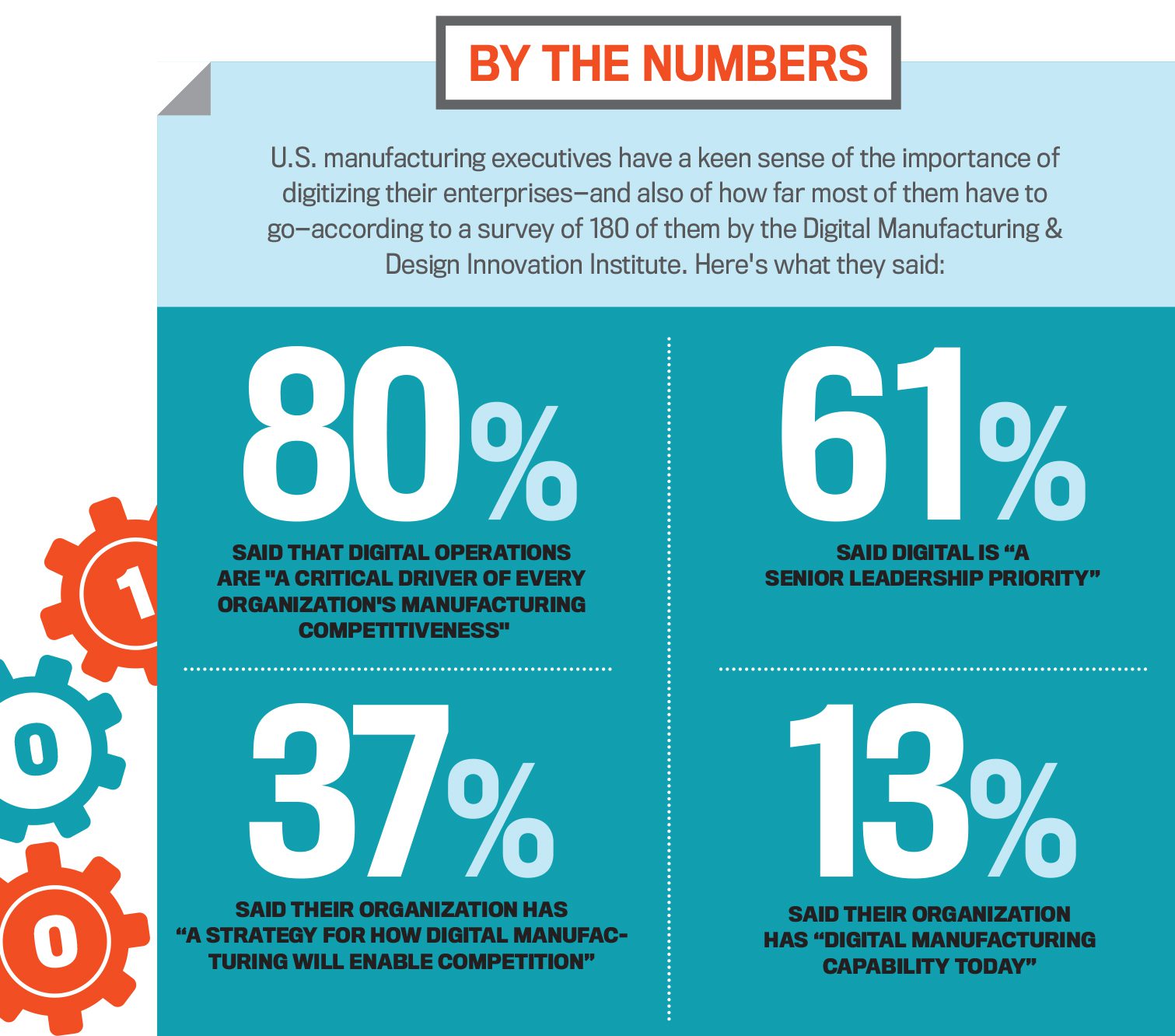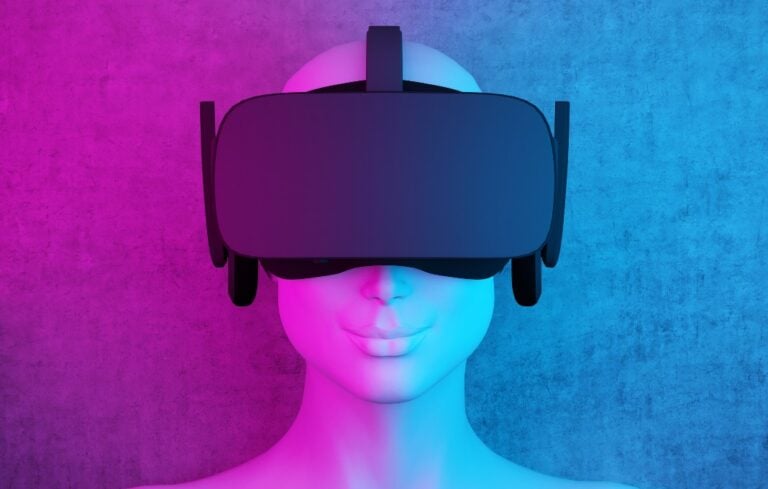
Digitization is key to the future success of American manufacturing—which is why dozens of major manufacturers and the federal government backed the creation of the $320-million Digital Manufacturing and Design Innovation Institute (DMDII) on Goose Island in the Chicago River. Now the Obama administration and some of the icons of American manufacturing—including GE, John Deere, Procter & Gamble, Caterpillar, Lockheed Martin and Boeing—want to see DMDII over the next five years synergize the digital acumen of U.S. fabricators into the sort of determinative global advantage in manufacturing that domestic firms enjoy in software.
“Digital is how the U.S. wins in manufacturing,” says William King, chief technology officer of DMDII, the organization led by the University of Illinois that launched in 2014 with $70 million in funding from the Department of Defense and $250 million in corporate commitments, and just opened its doors in the spring. “The whole world looks to the U.S. for digital innovation, [and] digital is a really good fit for the American way of doing things, for our business and culture and education system. As manufacturing becomes much more of an information industry, we’re really poised to win because of the things that have helped America to win at digital in other industries.”
David Pivonka, chief scientist for electronics and software at Illinois Tool Works, agrees that DMDII’s work “will significantly affect the way products are designed and manufactured here in the U.S. These changes will help U.S. manufacturing gain a competitive edge.”
DMDII is one of just six public-private partnerships launched over the last couple of years under the Obama Administration’s National Network for Manufacturing Innovation, also including outfits devoted to lightweight manufacturing materials and to electronics manufacturing with “next-generation” power. But DMDII’s mission might be the most critical because of how digitization is rapidly redefining manufacturing prowess. In fact, digitization is unfolding as “the fourth major upheaval in modern manufacturing,” McKinsey consultants recently concluded, following the lean revolution of the 1970s, the outsourcing phenomenon of the 1990s, and the automation that took off in the 2000s.
In its effort to lead what McKinsey calls “Industry 4.0,” the U.S. “is certainly not ahead,” the institute’s King maintains. There are “pockets of excellence,” he notes—such as GE’s Brilliant Factory concept, Boeing’s complete digitization of aircraft design and the way that engine companies such as Pratt & Whitney track parts through the entire life cycle of their products–but similar outcroppings of sublime digitization of manufacturing are evident around the world. America is already behind in some areas, he argues, including the extent to which small- and mid-sized manufacturers are digitized in Germany.
Backers’ dream is that the “nodes” of the National Network for Manufacturing Innovation duplicate the success of Sematech a quarter-century ago. Formed in 1988, the Semiconductor Manufacturing Technology consortium successfully organized leaders in semiconductor tech, such as Intel and Texas Instruments, to help the U.S. memory-chip economy regain
its competitive edge by cutting manufacturing costs and product defects.
A similar outcome for DMDII, King said, “would be awesome.” Even in its very inception, some participants argue, the DMDII already accomplished much. The institute executed the “tall order” of “bringing together a really credible mix of public and private partnerships” to act on the digital-manufacturing challenge, says Tolga Kurtoglu, vice president and director of the system-sciences lab for the Palo Alto Research Center (PARC), an advanced-research outfit owned by Xerox. The new organization is aiming at the right sweet spot for accelerating factory digitization, he says: bridging the “valley of death” where early-stage and risky ideas go to die for lack of a guaranteed return on investment.
With about 30 staffers on site and as many as another 50 on the way to its 94,000-square-foot facility, the institute has already been disbursing a total of about $50 million in awards to a few dozen pilot projects that will unfold over the next two years, not only at Goose Island but all over the Midwest, mostly at clusters consisting of a manufacturing OEM, a university, a software company and some mid-market suppliers. Many teams will be competing with one another to come up with the best solutions for a given challenge.
 There’s a lot of work ahead to make America an undisputed No. 1 in digital manufacturing. U.S. universities and research institutes are considered the best in the world at creating knowledge. American manufacturers also have become astute at generating mind-boggling quantities of data—more than any other part of the economy, actually—about their operations, products and other measurables, from the first concept entered into a 3D computer model to information about how long a product sits on a store shelf. What’s more, the U.S. retains the best system of commercialization and taking things to market.
There’s a lot of work ahead to make America an undisputed No. 1 in digital manufacturing. U.S. universities and research institutes are considered the best in the world at creating knowledge. American manufacturers also have become astute at generating mind-boggling quantities of data—more than any other part of the economy, actually—about their operations, products and other measurables, from the first concept entered into a 3D computer model to information about how long a product sits on a store shelf. What’s more, the U.S. retains the best system of commercialization and taking things to market.




Chief Executive Group exists to improve the performance of U.S. CEOs, senior executives and public-company directors, helping you grow your companies, build your communities and strengthen society. Learn more at chiefexecutivegroup.com.
0

1:00 - 5:00 pm
Over 70% of Executives Surveyed Agree: Many Strategic Planning Efforts Lack Systematic Approach Tips for Enhancing Your Strategic Planning Process
Executives expressed frustration with their current strategic planning process. Issues include:
Steve Rutan and Denise Harrison have put together an afternoon workshop that will provide the tools you need to address these concerns. They have worked with hundreds of executives to develop a systematic approach that will enable your team to make better decisions during strategic planning. Steve and Denise will walk you through exercises for prioritizing your lists and steps that will reset and reinvigorate your process. This will be a hands-on workshop that will enable you to think about your business as you use the tools that are being presented. If you are ready for a Strategic Planning tune-up, select this workshop in your registration form. The additional fee of $695 will be added to your total.

2:00 - 5:00 pm
Female leaders face the same issues all leaders do, but they often face additional challenges too. In this peer session, we will facilitate a discussion of best practices and how to overcome common barriers to help women leaders be more effective within and outside their organizations.
Limited space available.

10:30 - 5:00 pm
General’s Retreat at Hermitage Golf Course
Sponsored by UBS
General’s Retreat, built in 1986 with architect Gary Roger Baird, has been voted the “Best Golf Course in Nashville” and is a “must play” when visiting the Nashville, Tennessee area. With the beautiful setting along the Cumberland River, golfers of all capabilities will thoroughly enjoy the golf, scenery and hospitality.
The golf outing fee includes transportation to and from the hotel, greens/cart fees, use of practice facilities, and boxed lunch. The bus will leave the hotel at 10:30 am for a noon shotgun start and return to the hotel after the cocktail reception following the completion of the round.